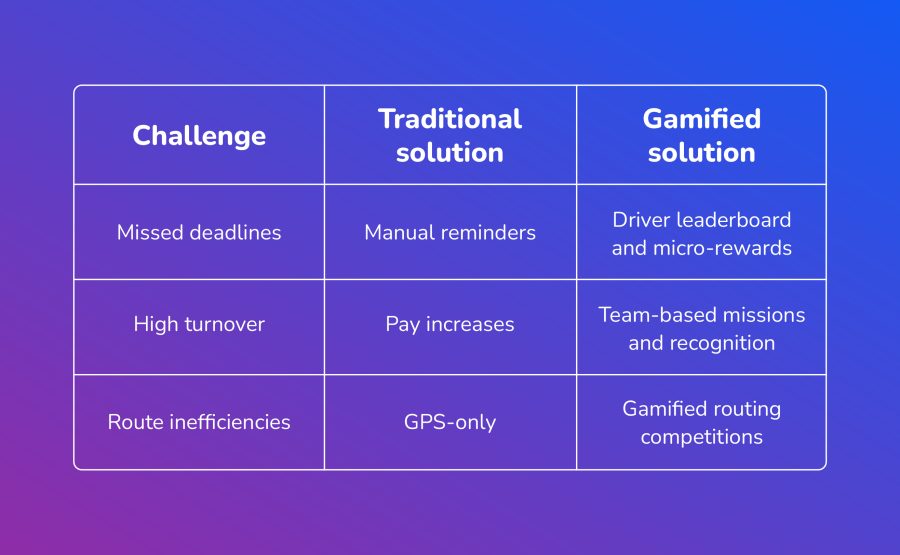Learn how a gamified solution can engage employees, reduce turnover, and enhance last mile delivery productivity.

Back to Blog
Struggling with last mile delivery delays, inefficiencies, and disengaged drivers? These challenges are common and are costing you a lot of money. However, the solution might be simpler than you think: gamification.
The last mile delivery process has become one of the toughest puzzles for logistics companies with 53% of the total delivery costs. The demand for faster delivery times, route optimization, and increased customer satisfaction has never been greater. Yet, these pressures reveal significant last mile delivery challenges.
Could gamification be the game changer the industry needs?
Last mile delivery, the final step in the supply chain journey, involves transporting a package from a distribution hub to its ultimate destination – typically a customer’s residence or a retail outlet.
This stage directly impacts customer satisfaction and loyalty, particularly in sectors like e-commerce, food delivery, and retail. Meeting these expectations requires optimizing last mile delivery to be as swift and efficient as possible.
The complexity stems from factors like urban congestion, narrow delivery windows, and the need for precision in reaching individual addresses. According to Statista, addressing these challenges effectively is key to maintaining profitability and staying competitive in a market that was valued at $140.48 billion in 2023 and is expected to reach $200.42 billion by 2027.
As found by Statista, 25% of last mile delivery companies feel like operational efficiency is their biggest challenge. Below are the critical pain points faced by logistics companies:
The pressure to meet delivery timelines is always a priority. Keeping your employees engaged and focused becomes the main focus of delivery companies to keep customer satisfaction high.
Handling surges in order volumes during peak seasons remains a persistent issue. Poor preparation and resource allocation during high-demand periods can overload drivers and disrupt the logistics chain.
From congested urban areas to remote rural regions, poorly optimized delivery routes lead to increased delivery times, higher shipping costs, and an amplified carbon footprint.
Today’s customers expect real-time tracking, same-day delivery, and personalized service. Falling short of these expectations can damage trust and loyalty, directly impacting profitability.

Gamification introduces game-like elements to the workplace, addressing these operational challenges through measurable incentives and real-time feedback systems.

The challenges of last mile delivery are significant, but gamified solution like vaibe offer a transformative approach.
Being a white-label gamification solution, vaibe seamlessly integrates into your existing systems. This way, you can turn daily delivery tasks into engaging challenges, where drivers stay motivated to meet deadlines, optimize routes, and improve customer satisfaction.
Thanks to the built-in reward mechanisms, your company can recognize performance through points, badges, or incentives — boosting retention and reducing turnover. In turn, this leads to fewer missed deadlines, lower operational costs, and higher customer satisfaction.

With vaibe, your company can scale last mile logistics and become more profitable while keeping teams motivated and loyal.
By fostering engagement, enhancing productivity, and aligning operational goals with customer expectations, gamification enables logistics companies to achieve sustainable success.
Ready to optimize your last mile logistics? Request a free demo of vaibe’s gamification solution.
Learn effective strategies to boost employee engagement, retention, and workplace satisfaction.
Learn how game mechanics, rewards and motivation strategies influence employee engagement.
Find out more about how vaibe gamification boosts operational efficiency in Supply Chain & Logistics with gamification.
How gamification boosts operational efficiency and service excellence in last mile delivery